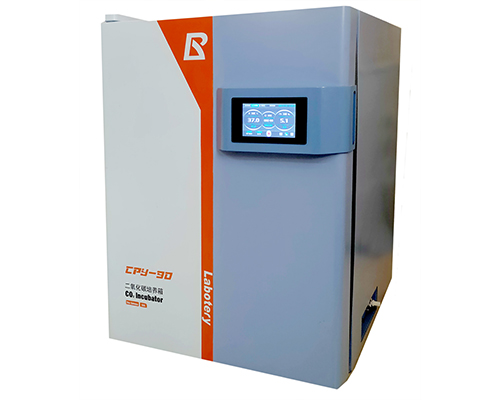CO₂ incubators play a pivotal role in pharmaceutical research, particularly in drug screening and cytotoxicity evaluation. Here's a detailed explanation of their applications in these experiments:

I. Applications in Drug Screening
1. High-Throughput Screening Platforms
Cell Model Establishment:
Maintain stable cultures of reporter cell lines (e.g., luciferase-labeled cells)
Support expansion of engineered cell lines (e.g., CHO cells overexpressing target proteins)
Provide physiologically relevant microenvironment for primary tumor cells (5% CO₂, hypoxic conditions)
Screening Condition Optimization:
Precise pH control (via CO₂/HCO₃⁻ buffer system)
Maintain constant 37°C to prevent false positives/negatives from temperature fluctuations
Integrated humidity control (>90% RH) prevents concentration deviations from medium evaporation
2. Integration with Automated Systems
Robotic Compatibility:
Specially designed sliding doors for automated plate handling
Vibration-resistant construction ensures stability during robotic operations
Real-time Monitoring:
Built-in optical sensors for confluency monitoring
Dissolved oxygen measurement ensures proper gas exchange in high-throughput conditions
3. Support for Specialized Models
3D Tumor Spheroid Screening:
Provide oxygen gradients required for deep spheroid layers
Maintain stability for long-term cultures (up to 4 weeks)
Organoid Drug Sensitivity Testing:
Accommodate special culture requirements of patient-derived organoids
Support Matrigel-embedded cultures
II.Integration with Downstream Analytical Platforms
Applied Biosystems instruments are commonly used to analyze the outcomes of drug treatment. The CO₂ incubator ensures the cellular sample quality before these analytical steps:
i. Cell Viability Assays
(e.g., MTT, CCK-8, CellTiter-Glo)
Measure metabolic activity to assess cytotoxicity.
Accurate results depend on cells being in consistent physiological states maintained in CO₂ incubators.
ii. Fluorescence or Staining-Based Assays
(e.g., Flow Cytometry, AO/PI staining)
Assess apoptosis, necrosis, or cell cycle changes.
Incubators support reaction stability during staining protocols.
iii. Gene Expression Studies
(e.g., qPCR, RT-PCR using Applied Biosystems instruments)
Quantify changes in gene expression after drug exposure.
Cells must be incubated under stable CO₂ conditions to reflect true gene expression profiles.
iv. Protein-Level Assays
(e.g., Western blot, ELISA)
Detect proteins involved in cell death pathways or drug responses.
Reliable expression profiling depends on controlled cell culture conditions.
III. Experimental Optimization
1. Recommended Culture Parameters
Assay Type | Recommended CO₂ | Temperature | Special Requirements |
|---|---|---|---|
Conventional screening | 5% | 37°C | >90% humidity |
Neurotoxicity | 7% | 35.5°C | Vibration-proof design |
Hepatotoxicity | 5% | 37°C | Pyruvate supplementation |
2. Quality Control
Batch Consistency:
Daily CO₂ consumption recording
Performance validation with standard cell lines (e.g., HepG2)
Contamination Prevention:
30-minute UV sterilization before experiments
Antibiotic-containing negative controls


